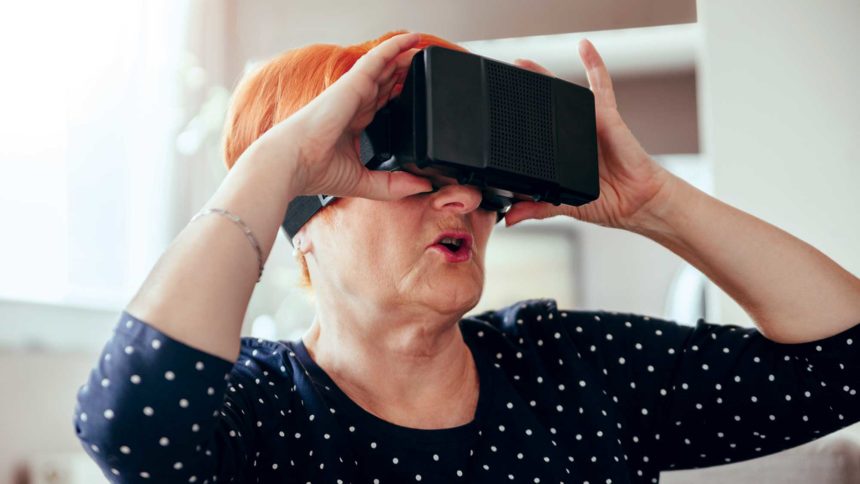
Several years ago, University of Washington’s Harborview Burn Center successfully experimented with immersive virtual reality (VR) to treat the excruciating pain that comes from debriding and cleaning burn wounds.
“To me, this is one of the most compelling rationales for using VR in a therapeutic manner,” says Christopher Krause, IN2L’s director of therapy and director of research and outcomes.
Over the years, VR has shown a great deal of promise in restoring mobility in Parkinson’s and stroke patients, and as a May 2018 article in the journal Neurology showed, there were conclusive improvements in the gait and balance in neurologic patients, especially when combined with conventional therapy.
The use of VR has long exhibited promise in memory care.
“With the prevalence of dementia affecting older Americans, virtual reality is an engaging concept that can target physical functionality goals and cognitive goals, while indirectly increasing interactions and assisting with overcoming sedentary, isolated lifestyles,” says Emily Rampmaier, vice president of clinical services for Reliant Rehabilitation.
Krause believes VR is effective in helping dementia patients endure the tedium of repetitive movements. “If you’re in a virtual world and have things to see and reach for, it’s likely that repetitive reaching will seem fun, meaningful and maybe both,” he says.
As the use of VR continues to become more widespread, applications geared toward rehabilitation will only continue to grow and evolve, Rampmaier adds. “As clinicians employ these creative, novel treatment approaches, tracking outcomes and patient response is critical to developing evidence-based pathways for care interventions.”
Still, therapists are somewhat as cautious as they are curious about VR’s potential.
“As a cautionary note to potential therapists and caregivers who may find uses for VR in the clinical setting: I think VR is cool and I’ve enjoyed using it,” says Krause. “But it’s not for everyone. The vestibular system in some people can’t handle the sometime confusing signals sent to the brain. This is a well-known reaction.”



